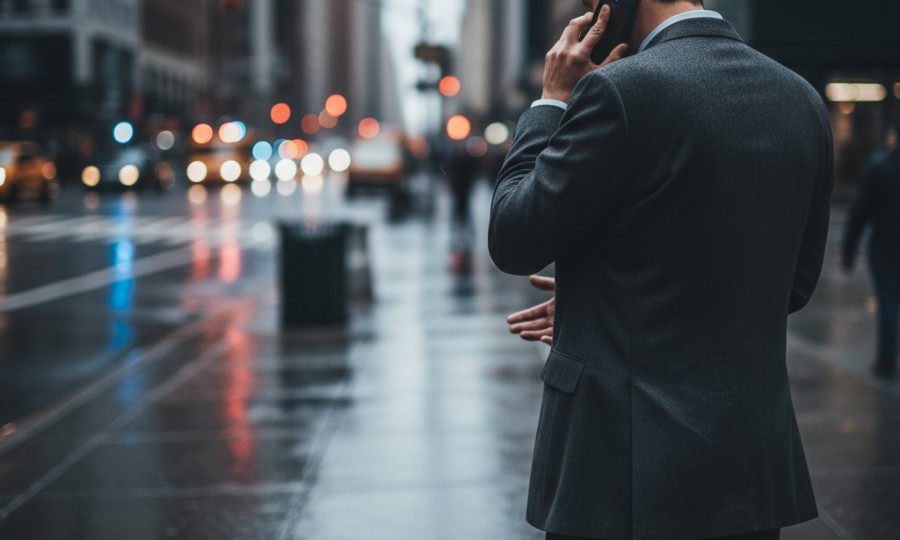
Imagine this: One moment, you’re enjoying a stroll through a vibrant New York City neighborhood – maybe grabbing a coffee in the West Village or hurrying to a meeting in Midtown. The next, everything changes. A sudden impact, the screech of tires, and you find yourself on the pavement, disoriented and in pain. Pedestrian accidents in NYC aren’t just statistics; they’re terrifying, life-altering events that can leave you feeling utterly lost. It’s a situation no one ever expects, and when it happens, you’ll likely feel a surge of panic and confusion. What do you do? Who do you call? Ever wonder what happens in those chaotic moments right after an accident, when your mind is racing?
Navigating the aftermath of a pedestrian accident in New York City is incredibly complex. From ensuring your immediate safety to understanding intricate legal procedures, there’s a lot to process. But here’s the thing: acting quickly and correctly in the moments, days, and weeks following an incident can significantly impact your recovery and any potential legal claim. We’re here to walk you through the essential steps, ensuring you’re empowered with the knowledge you need.
The Immediate Aftermath: Prioritizing Safety and Seeking Aid
Your safety, and the safety of those around you, is paramount. Even if you feel shaken but generally okay, don’t underestimate the shock your body just experienced. Adrenaline can mask pain, and what seems like a minor bump could be a serious injury waiting to manifest.
- Check for Injuries: First things first, assess yourself and anyone else involved. Can you move? Is there visible bleeding? If you’re able to, try to move yourself to a safer location, away from traffic, but only if doing so won’t worsen any injuries.
- Call 911 Immediately: This is non-negotiable. You need an official police report from the NYPD, and you need medical professionals (EMS) to assess your condition. Even if you feel fine, let paramedics check you out. A police report creates an official record of the incident, which is crucial for any future insurance claims or legal proceedings. They’ll document the scene, gather initial statements, and assign a case number.
- Do Not Admit Fault: In the confusion, you might instinctively apologize or make statements about what happened. Don’t. You don’t have all the facts, and anything you say can be used against you later. Stick to the facts when speaking with police, but avoid speculating or taking responsibility.
Let’s say, for example, you’re crossing a street in Brooklyn, and a turning vehicle strikes you. You’re dazed but manage to stand up. You might think, “I’m okay, it’s just a scrape.” But in reality, you could have whiplash, a concussion, or internal injuries that aren’t immediately apparent. Calling 911 ensures an official record of the incident and gets you immediate medical attention, even if it’s just a precautionary check-up.
Documenting the Scene: Your Evidence Toolkit
Once immediate safety is addressed, your next priority is to gather as much information as possible. Think of yourself as an impromptu investigator; the more details you can collect, the stronger your position will be later on. This evidence can be invaluable for your personal injury attorney.
- Capture Photos and Videos: If you’re physically able and it’s safe to do so, use your phone to document everything. Take pictures of:
- The vehicle involved (license plate, damage, make/model).
- The accident scene (road conditions, traffic signals, skid marks, street signs, debris).
- Your injuries and torn clothing.
- The surrounding environment (weather conditions, nearby businesses, crosswalk markings).
Don’t just take one or two; take multiple photos from different angles.
- Gather Witness Information: Eyewitnesses can provide unbiased accounts. Ask anyone who saw the accident for their name, phone number, and email address. Their testimony can corroborate your story and be critical if there are conflicting accounts.
- Exchange Driver Information: Get the driver’s name, contact information, driver’s license number, vehicle license plate number, and insurance information. Take a picture of their insurance card and driver’s license if they’ll allow it.
- Note Police Details: Make sure you get the names and badge numbers of the responding officers, along with the precinct and the official police report number. You’ll need this to obtain a copy of the report later.
Consider a scenario where you were hit in a crosswalk, and the driver claims you darted out. If you managed to photograph the “Walk” signal clearly illuminated, or a witness confirms the light was in your favor, that evidence becomes incredibly powerful. Without it, it can become a “he said, she said” situation, which is far more challenging to resolve.
Navigating Medical Care and Insurance Claims in NYC
After the initial shock, your focus should shift to your health and the financial implications. New York State operates under a “No-Fault” insurance system for motor vehicle accidents, which includes pedestrians. This system is designed to get you fast access to medical care and lost wages, regardless of who caused the accident.
- Seek Prompt Medical Attention: This cannot be stressed enough. Even if you declined EMS at the scene, see a doctor, urgent care, or hospital immediately. Tell them you were involved in a pedestrian accident. Documenting your injuries from day one creates a clear medical record linking your injuries to the incident. But what if you feel ‘fine’? Many serious injuries, like concussions or soft tissue damage, have delayed symptoms. Waiting can not only worsen your condition but also make it harder to prove your injuries were a direct result of the accident.
- Understand New York’s No-Fault Law: As a pedestrian hit by a vehicle in NYC, you’re typically covered under the driver’s (or, in some cases, your own household’s) No-Fault insurance policy. This coverage pays for your medical expenses, lost wages, and other necessary expenses up to a certain limit (usually $50,000, though higher limits can be purchased). You must file a No-Fault application (NF-2 form) within 30 days of the accident. Missing this deadline can jeopardize your ability to receive these benefits.
- Keep Detailed Records: Maintain a meticulous file of all medical bills, receipts for prescriptions, therapy appointments, lost wage statements, and any other out-of-pocket expenses related to the accident. This documentation is vital for your claim.
Let’s take Sarah, for example. She was hit by a delivery van in Manhattan. Shaken, she went home, thinking she’d just rest. A few days later, severe neck pain and headaches set in. Because she delayed seeing a doctor, the insurance company initially questioned if her symptoms were truly related to the accident. Getting prompt medical care and filing the No-Fault application on time would have streamlined her access to treatment without these hurdles.
Why Legal Guidance is Non-Negotiable After a Pedestrian Accident
You might be thinking, “I’ve called 911, I’ve seen a doctor, and I’m dealing with No-Fault. Why do I need a lawyer?” The truth is, while No-Fault covers some immediate expenses, it often doesn’t cover the full extent of your damages, especially for serious injuries. This is where a skilled personal injury attorney specializing in NYC pedestrian accidents becomes your most valuable asset. Why can’t you just handle the insurance company yourself? And isn’t it just about getting your medical bills paid?
- Navigating the Legal Labyrinth: New York’s personal injury laws are incredibly intricate, especially concerning negligence, comparative fault, and serious injury thresholds. Insurance companies have legal teams dedicated to minimizing payouts. You need someone on your side who understands these complexities and can advocate for your best interests.
- Valuing Your Claim Accurately: Beyond medical bills and lost wages, a serious pedestrian accident can result in significant pain and suffering, emotional distress, future medical needs, and a diminished quality of life. An attorney understands how to quantify these non-economic damages and negotiate for fair compensation. They also know how to investigate and potentially uncover additional insurance policies that could provide more coverage.
- Meeting Deadlines and Statutes of Limitations: There are strict deadlines for filing lawsuits (the “statute of limitations”), generally three years from the date of the accident for most personal injury claims in New York, but much shorter for claims against municipal entities like the City of New York (often 90 days to file a Notice of Claim). Missing these deadlines means losing your right to pursue compensation entirely.
- Dealing with Comparative Negligence: New York follows a pure comparative negligence rule. This means if you were partially at fault for the accident (e.g., jaywalking, but the driver was speeding), you can still recover damages, but your award will be reduced by your percentage of fault. An attorney can argue to minimize your assigned fault.
For instance, consider a pedestrian hit by a city bus. The deadlines and procedures for suing a municipal entity are vastly different and much stricter than a private individual. Without an attorney who knows the specific requirements for filing a Notice of Claim against the City of New York, you could easily miss crucial deadlines and forfeit your right to seek compensation, even if your injuries are severe.
What to Expect During a Legal Consultation
Taking that first step to contact an attorney can feel daunting, but it’s usually a straightforward and informative process. Most personal injury lawyers offer free, no-obligation consultations, so there’s really nothing to lose.
- What to Bring: When you meet with an attorney, it’s helpful to bring any documents you’ve collected: the police report number, photos, witness information, medical records, and insurance details. Don’t worry if you don’t have everything; a good attorney can help you gather what’s missing.
- Discussing Your Case: You’ll explain what happened, and the attorney will ask detailed questions to understand the circumstances, your injuries, and how the accident has impacted your life. This is your opportunity to share your story.
- Understanding the Process: The attorney will explain the legal process, including how they investigate, negotiate with insurance companies, and potentially pursue litigation. They’ll also discuss their fees, which are almost always on a contingency basis – meaning you don’t pay anything unless they win your case.
- Asking Questions: Don’t hesitate to ask about their experience with similar cases, their communication style, and what you can realistically expect. This is a partnership, and you should feel comfortable and confident in your choice.
Are you truly prepared to navigate that maze alone? A pedestrian accident in New York City is more than just a physical ordeal; it’s a legal challenge that demands professional expertise. The path to recovery, both physical and financial, can be long and arduous, but you don’t have to walk it alone. By taking the right steps – prioritizing medical care, thoroughly documenting the scene, understanding your insurance rights, and, crucially, securing experienced legal representation – you can protect your future. Don’t let the complexities overwhelm you. Reach out for a consultation; it’s the first step toward getting the justice and compensation you deserve.
Free Case Consultation
Injured in an accident? Contact Rosenberg, Minc, Falkoff & Wolff for a free and confidential case review with an experienced NYC personal injury attorney.


